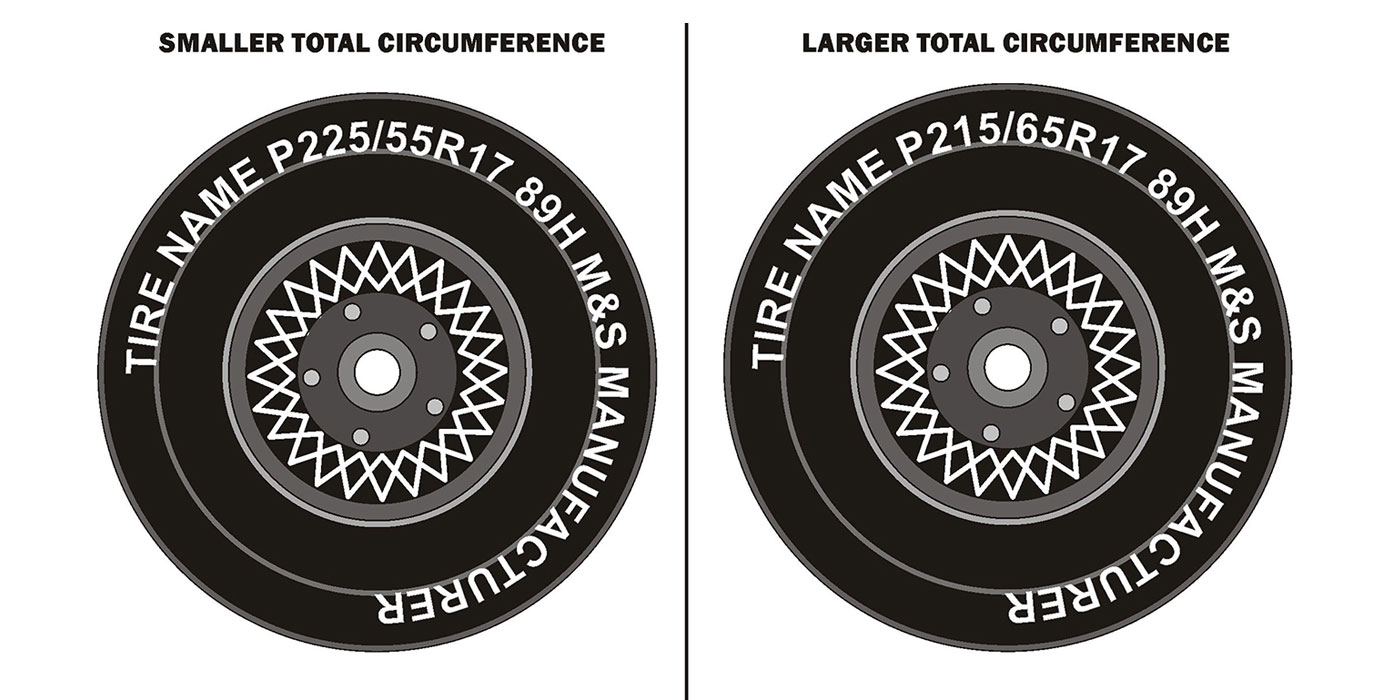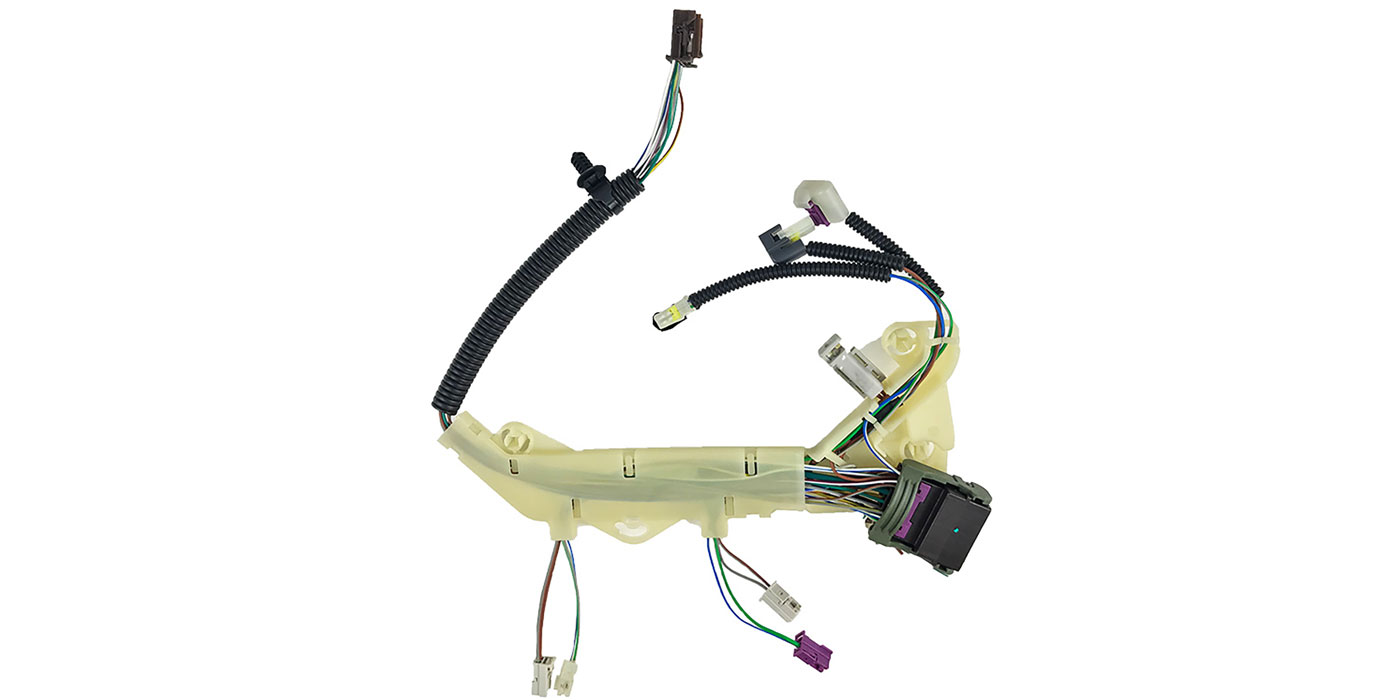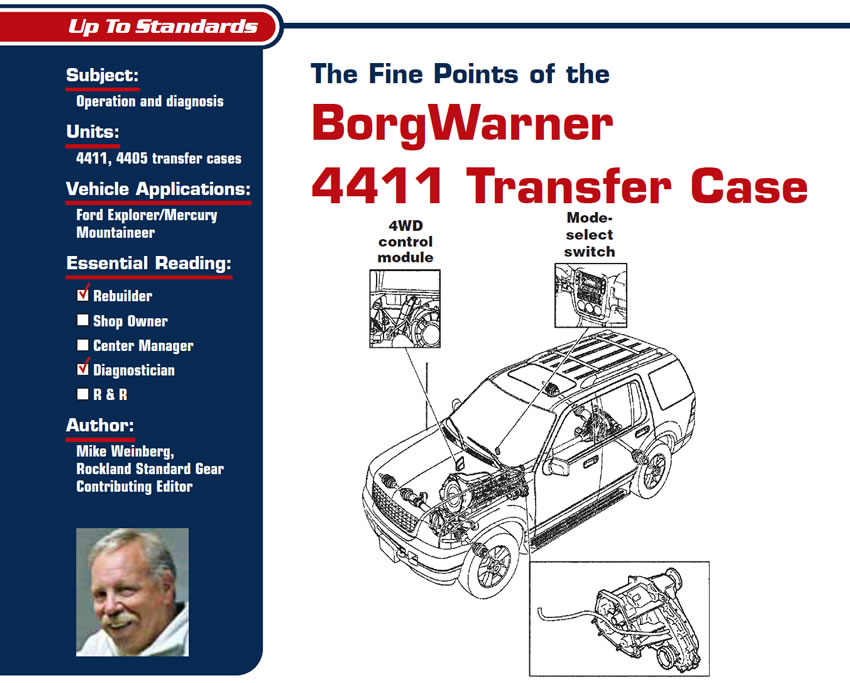
Up to Standards
- Subject: Operation and diagnosis
- Unit: BorgWarner 4411 transfer case
- Vehicle Application: Ford Explorer/Mercury Mountaineer
- Essential Reading: Rebuilder, Diagnostician
- Author: Mike Weinberg, Rockland Standard Gear, Contributing Editor
One of the best-selling vehicles produced by Ford Motor Co. is the Ford Explorer/Mercury Mountaineer SUV. These vehicles started production using the BorgWarner 4405 transfer case and had a huge production run.
In 2002 Ford introduced the BorgWarner 4411 transfer case in these models. The 4411 is a design evolution of the 4405 transfer case, with the principal visual difference being a redesigned front case housing that mounts to the rear of the transmission. Like the 4405, the unit is found behind both manual and automatic transmissions. The major difference between the two units is the electronic controls operating the transfer cases.
Because of the huge volume of these units it will be necessary to review the theory of operations of the electronically controlled “automatic” or active transfer cases. Both the 4405 and 4411 are called automatic 4WD systems and share similar components. We have a transfer case with a 4WD control module (ECM), a dash-mounted mode-select switch (MSS) that allows the driver to select various operating modes and ranges, an electric shift motor with a position-sensing plate that informs the control module of the motor position, and an encoder assembly, which is part of the shift motor.
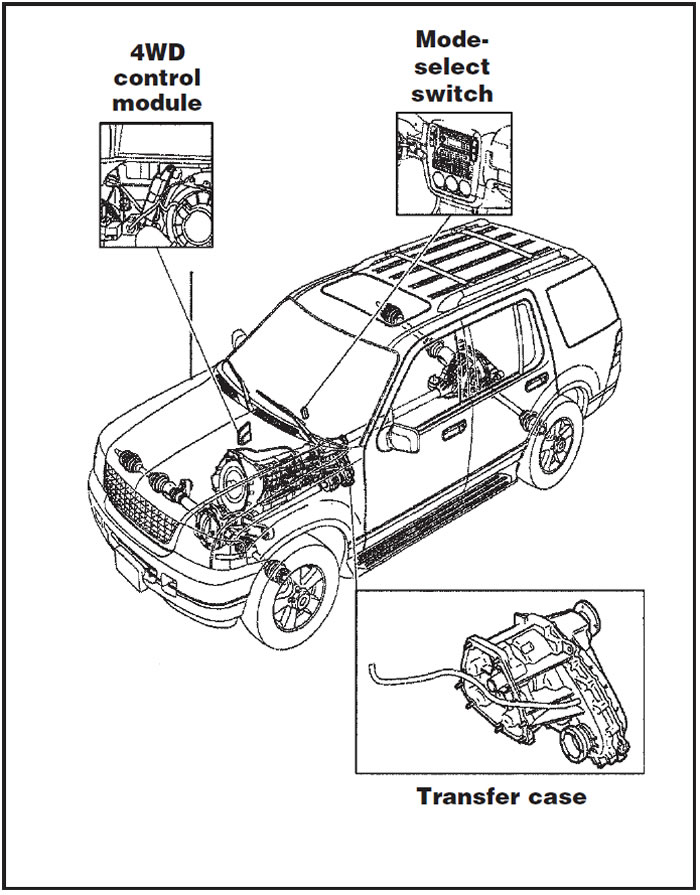
The driver selects either 4X4 Auto, 4WD High or 4WD Low through the MSS, which will illuminate when in the 4X4 Low position. Once a selection is made the electronic shift motor turns an internal cam, which moves the reduction shift fork to the called-for transfer-case position. A position sensor in the motor informs the control module of the position of the motor.
A brake-pedal-position sensor signals the 4WD control module when the brake is depressed. Two speed sensors mounted on the transfer case relay propshaft speeds to the 4WD control module. In the 4X4 automatic mode, power is divided to the front and rear propshafts through a ball-and-ramp-style internal clutch pack. The control module controls the duty cycle to the clutch pack, sending 95% of the output to the rear propshaft under normal driving conditions. If the computer notices a difference in propshaft speeds, the duty cycle to the clutch pack will be increased to send more power to the front propshaft until the shaft speeds are equal, and then the clutch will go back to minimum duty cycle.
As with any “automatic” or active transfer case, tire size and pressures are critical to proper operation. Do not try to diagnose one of these units without first measuring the tire diameters with a stagger gauge or a tape around the center of the tread on each tire and making sure each tire has the same pressure. A size difference between tires of as little as one-quarter inch will create trouble codes and improper diagnosis.
In the 4X4 high and low ranges, the control module will lock the clutch pack into full duty cycle, sending a 50/50 power split to the prop shafts. In the low mode, a planetary system produces a gear reduction. The vehicle should not be used in anything other than the automatic 4X4 mode on hard, dry pavement. Both 4×4 high and low should be used only in snow, ice or off-road conditions on soft ground to prevent driveline windup. It is always smart to ask your customer in which mode they drive, as you will find more than one customer who is using the system incorrectly and believing that the transfer case has an internal problem.
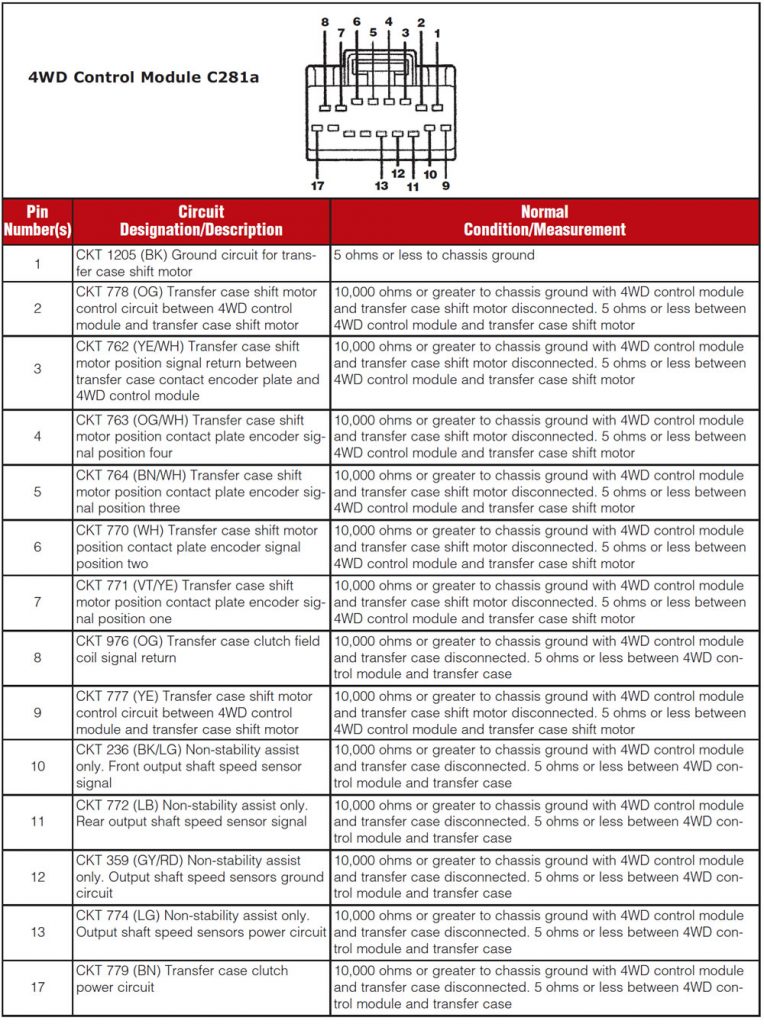
In 2002, when Ford switched to the 4411 design, propshaft speed was measured through the installed propshaft speed sensors. In 2003 Ford introduced stability control to the Explorer/Mountaineer models. This is an attempt to safeguard the driver against oversteer conditions and will apply the transfer-case clutch and the antilock-braking system to keep the vehicle on its intended path of travel.
The reason that you need to be aware of this is that in the 2003 and 2004 models, the speed sensors on the transfer case are present but are NOT active. If you look at the enclosed circuit illustration you will see circuits that are described as “with or without stability control.” You must determine whether the vehicle has stability control before starting any diagnosis to trace out a problem properly.
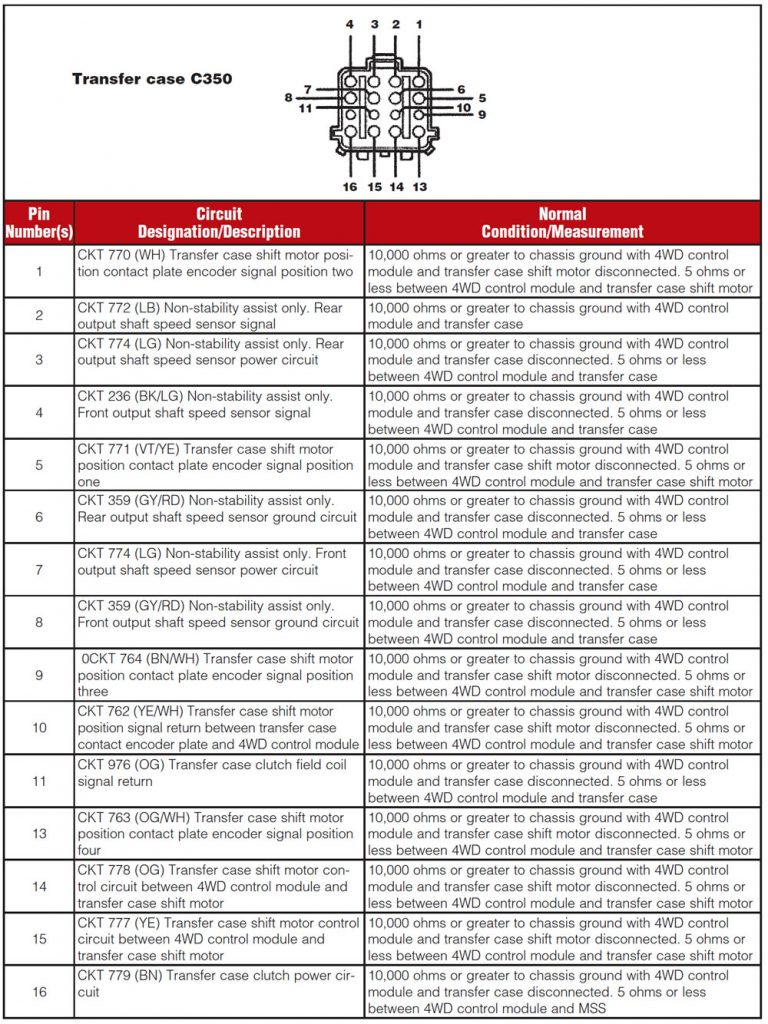
With the introduction of the 4411, a factory-installed gasket between the transmission and the front case of the transfer case is used. Various suppliers have distributed aftermarket gaskets in their overhaul kits, and problems soon began. Our tech-line phone traffic went wild, with complaints of “flashing mode-switch indicator lights” after a rebuild of the transmission or transfer case.
During our research to find a fix for this condition it became apparent that the aftermarket gaskets did not provide a proper ground path between the transmission and the transfer case. Early on we solved the problems by having the shops install a ground strap between the transfer case and the chassis, which cured the problem. Further examination revealed that the factory gasket has two metal washers molded into it to complete the ground path, but the aftermarket gaskets did not have this.
Obviously, any electrically controlled mechanism must have a proper ground path to complete a circuit. It doesn’t matter whether you wish to use an aftermarket gasket because of price or availability, but if you do, you must install a good ground strap on the transfer case for proper operation.
Another source of poor grounding comes from painted units. Many rebuilders paint their finished units for better presentation to the customer as well as for identification. We have found grounding problems in both the 4405 and 4411 units caused by heavy coatings of paint on the mounting flange for the transfer case to the cross member and in the threaded holes for the mounting bolts. Masking these areas before painting will provide a clear ground path and eliminate the problem.
In the 2005 model year the BW 4411 eliminated the speed sensors on the transfer case, as apparently stability control was added to all models. The 2005-and-up BorgWarner model number on the ID tag mounted on one of the transfer-case attaching bolts is 4411 000 013. Be careful if you are swapping a late-model 4411 transfer case from a junkyard into an earlier vehicle that does not have stability control, because the early unit will not function without the speed sensors working.
On another note, on both the 4405 and 4411 models, make sure that you lube the O-rings on the speed sensors and twist them side to side when installing to make sure they are flush with the case. It is very easy to cock the speed sensors on installation. This will produce a high-pitched whine in operation as the speed sensor hits the tone wheel.
Little things mean a lot; if you pay attention to the details the big problems will go away.












